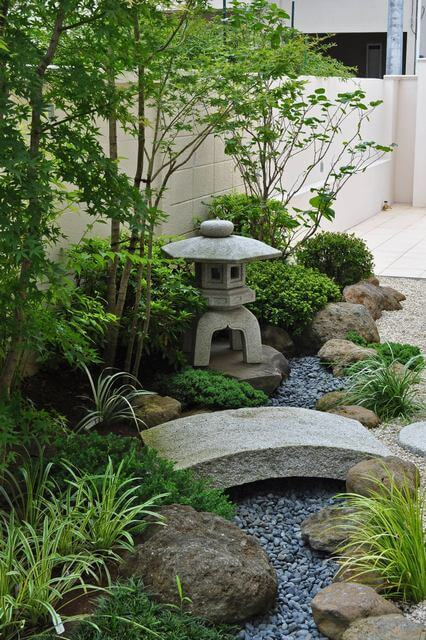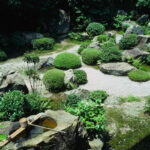Japanese garden design has become synonymous with tranquility, simplicity, and harmony. These traditional gardens are meticulously crafted to embody a sense of calm and balance, drawing inspiration from nature and incorporating elements such as water, stones, plants, and ornaments. The design principles of these gardens have been refined over centuries, reflecting Japanese aesthetics and philosophy.
One of the key elements in Japanese garden design is the use of natural materials, such as stones and water. Rocks are carefully selected and placed in a way that mimics natural formations, creating a sense of rugged beauty. Water features, such as ponds or streams, are also common in Japanese gardens, serving as focal points and adding movement and sound to the space.
Another important aspect of Japanese garden design is the concept of “borrowed scenery,” known as shakkei in Japanese. This technique involves incorporating the surrounding landscape into the design of the garden, blurring the boundaries between the two and creating a sense of continuity. By strategically placing trees, plants, and other elements, designers are able to create a harmonious relationship between the garden and its surroundings.
Japanese gardens are also characterized by their meticulous attention to detail. Every element in the garden is carefully considered, from the placement of rocks and plants to the arrangement of pathways and structures. Balance and symmetry play a key role in the overall design, with an emphasis on creating a sense of equilibrium and tranquility.
Plants also play a significant role in Japanese garden design, with a focus on using native species that evoke a sense of seasonal change. Trees such as cherry blossoms, maple, and pine are commonly found in Japanese gardens, symbolizing grace, beauty, and longevity. Bamboo is another popular plant choice, symbolizing strength and flexibility.
Overall, Japanese garden design is a reflection of a deep appreciation for nature and the changing seasons, embodying the principles of simplicity, harmony, and balance. From carefully curated rocks and water features to the meticulous arrangement of plants and structures, these gardens serve as peaceful sanctuaries that invite contemplation and connection to the natural world.
















